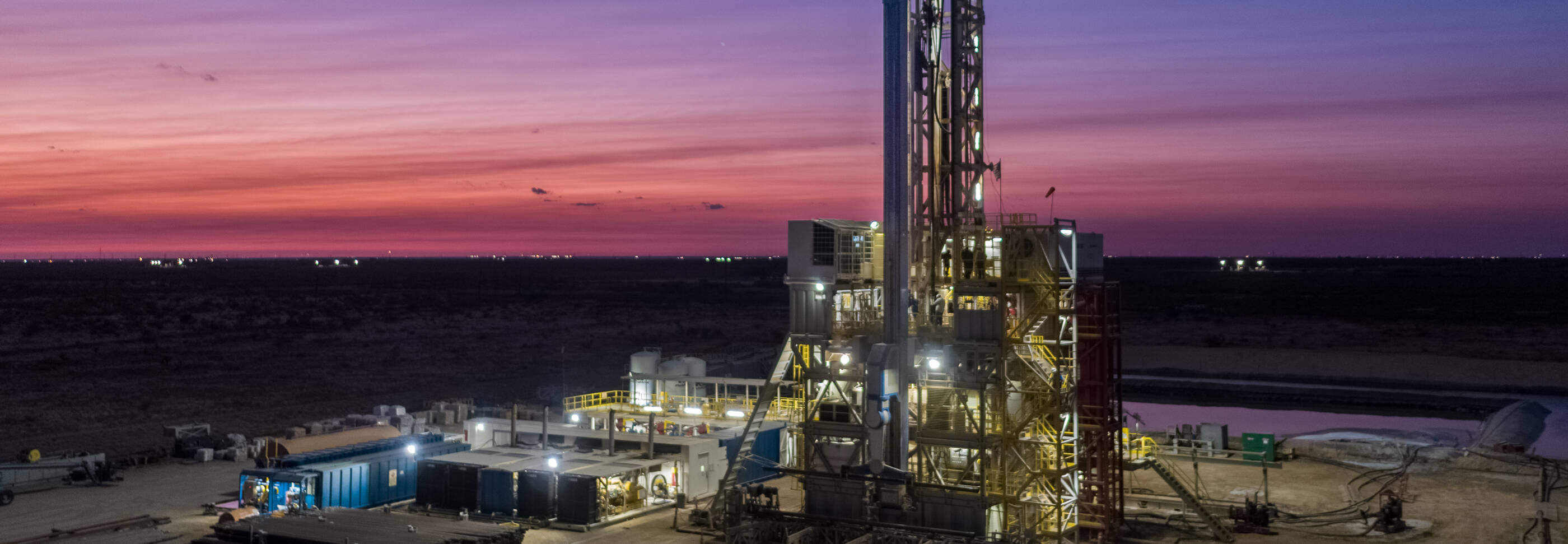selected item
Why ExxonMobil's Permian net zero plan by 2030 matters
This industry-leading plan will help position our Permian assets for the long term. It also will reduce the carbon footprint of all the essential products made from our Permian oil and gas – including transportation fuels and plastics.
Our Permian plans will be enabled by ExxonMobil’s recently announced investment of $15 billion over the next six years in lower greenhouse gas initiatives.
Permian net zero: Why it matters
To understand the impact of our announcement, first you have to know a little bit about the Permian.
Located deep below a large, flat stretch of the American landscape from West Texas to southeast New Mexico, the Permian Basin has been a bastion of U.S. oil and natural gas production for decades. Today, as a result of “unconventional” production technologies, the Permian represents more than 40 percent of ExxonMobil’s net U.S. upstream production; it is also the country’s single largest source of domestic oil and gas production.
Achieving net zero Scope 1 and 2 greenhouse gas emissions in the Permian will help ExxonMobil meet its recently announced corporate-wide emission-reduction plans (including reducing upstream greenhouse gas emissions intensity by 40-50 percent by 2030 versus 2016). It will also support U.S. climate goals and the ambitions of the Paris Agreement, which ExxonMobil supports.
Our plan is one of the most ambitious in the region: we are the first Permian operator to announce a net zero plan for both Scope 1 and 2 greenhouse gas emissions of operated assets by 2030.
How will we get there?
Scope 1 greenhouse gas emissions are those directly emitted from our own assets. Scope 2 is indirect greenhouse gas emissions from the generation of purchased power; for example, the emissions associated with making the electricity we use to power drilling operations.
Here are some of the solutions we are evaluating and/or pursuing to help reach net-zero greenhouse gas emissions in our Permian operations by 2030:
- Electrification. Electrifying our operations and then supplying them with low-carbon power will be a critical element – everything from drilling rigs to natural gas compressors. Wind, solar, hydrogen, and natural gas with carbon capture and storage are some of the technologies, among others, that we are considering.
- Reduced methane emissions. We will expand our use of technologies for monitoring methane leaks via satellites and networks of ground-based sensors, in addition to continuing aerial flyovers. Many of these technologies were either developed by ExxonMobil, or were tested by us with industry partners. They will enable ExxonMobil’s support for the Global Methane Pledge and the U.S. Methane Emissions Reduction Action Plan; they’re also why ExxonMobil has started the process to have natural gas production from its Poker Lake operations in New Mexico “certified” for methane emissions management. We expect this “certified gas” to be available early next year.
- Minimized flaring. We will continue to advance our flare reduction program, which by year-end 2021 we anticipate will reduce flaring volumes by more than 75 percent in our Permian operations compared to 2019. The plan is to eliminate all routine flaring by the end of 2022, in line with the World Bank Zero Routine Flaring Initiative, and continue progressing programs to minimize non-routine flaring, such as securing alternative natural gas delivery points and automated production curtailment.
- Equipment upgrades: We’ve already phased out all high-bleed pneumatic devices across our U.S. unconventional production. To further that progress, we’re converting pneumatic devices powered by natural gas to ones powered by electricity or compressed air, which eliminates methane emissions. We’re also carrying out multiple retrofit programs that will exceed current regulatory requirements and significantly reduce methane emissions from compressors and tanks. Finally, new facilities will be designed with our end goals in mind, so that we eliminate these emitting sources from the start.
Together, these actions are expected to eliminate the vast majority of our scope 1 and 2 greenhouse gas emissions in the Permian. We are evaluating possible methods to address residual greenhouse gas emissions, including the potential utilization of voluntary emissions offsets.
Our Permian net zero plan will require the support of well-designed policies and advances in technologies that increase the availability and reliability of cost-effective and carbon-neutral power in the region.
Our innovative Permian workforce
While the oil and gas in the Permian Basin is located below ground, all the work to reduce greenhouse gas emissions associated with its production occurs above ground – in large part thanks to the employees of XTO Energy, our subsidiary in the region, as well as our contractors, and the ExxonMobil employees who support them in Houston and elsewhere.
These men and women are dedicated to producing our resources in a responsible manner – applying innovation, technology, and their own expertise to promote workplace safety, environmental protection, and the interests of the communities in which they work.
Their efforts are helping ExxonMobil meet our corporate-wide 2025 greenhouse gas emission-reduction plans four years early, and giving the corporation confidence in setting our 2030 net zero plan in the Permian Basin.
One more thing to know: The molecules we produce in the Permian go on to make a range of products essential to modern life – including transportation fuels like gasoline and the plastics essential to a range of manufactured goods (textiles, electronics, car parts, and medical equipment, just to name a few). By reducing the greenhouse gas emissions associated with our Permian oil and gas production, we help reduce the carbon footprint of all the consumer products made from them.
We’re proud to have the Permian Basin become the first asset in ExxonMobil’s upstream portfolio to set a net-zero plan, and proud to lead our industry in reducing greenhouse gas emissions in the Permian to help fulfill society’s ambition for a lower-emissions future.
Explore more



